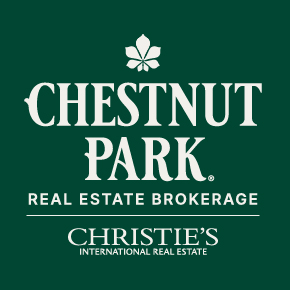In the September Market Report, five themes that were driving the Toronto and area marketplace were identified. These themes have become prominent during the course of 2021 and it is becoming evident that they will be the key features of the residential resale market for the remainder of 2021 and into the early months of 2022. These themes, with slight variation, were prominent in the October market data.
1. AVERAGE SALE PRICE
Prior to October, it appeared that the average sale price for all properties sold had plateaued around $1.1 Million, including condominium apartments. In October the average sale price popped up to $1,155,345 (also including condominium apartments), into record territory, and substantially higher than the $968,535 achieved last year, a 19.3 percent increase year-over-year. What drove this unexpected increase? Another key theme, the tension between market demand and supply.
2. DEMAND-SUPPLY TENSION
The demand-supply problem moved beyond critical into a danger zone in October. In October 11,740 properties came to market. That was 34 percent fewer than the 17,806 that came to market last year. Couple that with the 9,783 properties that were reported sold in October, by month-end there were only 7,750 properties in the entire greater Toronto area for sale. Compare that to the 17,313 that were available last year, and it becomes abundantly clear that we are in a dangerously imbalanced zone.
This imbalance will become even clearer when we discuss what’s happening to sale prices as compared to asking prices. With so little supply, and record levels of demand, the problem of lack of supply and affordability becomes acute. Multiple offers are the norm, no longer the exception, and based on the average sale price for October of $1,155,345, buyers competing for the limited number of properties on the market are driving Toronto and area into one of the most expensive cities on the globe.
3. CITY OF TORONTO V. 905
As 2021 winds down to a close, the disparity between the City of Toronto and the 905 region has been dissipating. Beginning in the late spring of 2020, during the height of the pandemic, more and more buyers have been flocking to the 905 region (and to many secondary markets throughout southern Ontario). As 2021 has unfolded, prices in the 905 region have increased dramatically, proportionally faster than those in the City of Toronto, and more recently, the availability of properties for sale has declined to the point where there are now more properties for sale in the City of Toronto than in all the 905 region.
At the end of October, as mentioned above, there were only 7,750 properties available for sale in the entire Toronto and area region. A closer look indicates that 4,247, or almost 55 percent of those properties were in the City of Toronto. That leaves only 3,503 available properties for sale from Burlington to the west, to Innisfil in the north and to Clarington in the east. This is a vast region. The lack of supply in the 905 region is a product of the pandemic, and buyers’ need and desire to have more space, safety and to satisfy their need for security. The ability to work remotely has fuelled and enabled this diaspora, but now the 905 region is without supply and with startlingly higher average sale prices.
At this pace the difference in price, for all housing types, will evaporate. It’s particularly interesting to note the dramatic increase in suburban condominium apartment prices. *October year-over-year increases.
4. LIST PRICES V. SALE PRICES
In October every trading area saw sale prices come in substantially higher than list prices. For the entire greater Toronto area the average sale prices was 107 percent of the asking prices. This includes all reported sales in Halton, Peel, York, Durham, Dufferin, and Simcoe Counties. Effectively the asking price is a point of commencement, and that’s all. Scarcity, location, demand, and auction style sales, will determine the end price. In various locations the percentage of sale price over ask was even higher. For example, all semi-detached properties in Toronto’s eastern trading areas sold for 115 percent of asking price and in an eye- popping 7 days!
It is not surprising that entering the month of November there were fewer active listings of every type of property, except condominium apartments, than were sold in October. In some trading areas the situation is dire. In the greater Toronto area 878 semi-detached properties were reported sold in October. November begins with only 347 available semi-detached listings. Not much choice for buyers, putting further pressure on both availability and affordability.
5. CONDOMINIUM APARTMENTS
Condominium apartment sales continued their resurgence in October. In the City of Toronto, sales were up by almost 34 percent compared to a year ago. Similarly in the 905 condominium apartment sales were up by almost 21 percent to 986 units. Prices followed the rise in sales, increasing by almost 11 percent in the City of Toronto and by 17 percent in the 905 region. Clearly, buyers have overcome their weariness of living in high-rise towers in more dense conditions, or this simply may be due to the fact that compared to ground level opportunities, condominium apartments remain the most affordable housing type and choice.
Like all other housing types, the supply of condominium apartments is declining. At the end of September, there were 3,882 active condominium listings in the greater Toronto area, and 2,918 in the City of Toronto. At the end of October the supply of condominium apartments throughout the entire region had declined by more than 11 percent to 3,440, and by 7.5 percent to only 2,700 in the City of Toronto. The last bastion of affordability and supply is quickly disappearing.
These five themes will sum up the Toronto and area marketplace for months to come. The now more real, looming threat of mortgage interest rates may cause a disruption to these themes. Based on the Bank of Canada’s recent pronouncements we may see rate hikes within the next few months. Rate hikes will have no positive impact on supply, although they will no doubt curb the rising prices that we witnessed in October.
Prepared by Chris Kapches, LLB, President and CEO, Broker, Chestnut Park® Real Estate Limited, Brokerage.
Have questions about the market, selling or buying?
Contact me any time. I’m happy to answer any questions you may have.



